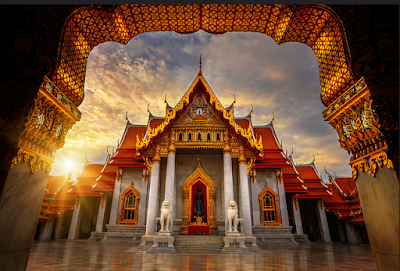Bhikkhu Bodhi (BAUS, Bodhi Monastery), Amber Larson, Dhr. Seven, Wisdom Quarterly
 |
| Buddhist wat or temple, Benjamabopit, Bangkok, Thailand (Krunja Photography/flickr.com) |
 |
| Lay vs monastic practice under the bodhi tree (Tapas Ghosh/tapasphotography/flickr.com) |
 |
| Burmese "novice monk" or samanera, training for ordination at age 20 (Silvia Pasqual) |
.
 |
| Thai novices (Valerio Allasla) |
There is a long and esteemed monastic tradition in popular, Hindu-influenced Mahayana Buddhism. But it is even stronger in the ancient Theravada tradition prevalent in Southeast Asian. The question is, Why would anyone want to become a fully ordained monk, nun, temporarily ordained novice, or anagarika (aspirant who has left home)?
The Buddha gave the best explanation in answer to just such a question. In a discourse entitled "The Fruits of Recluseship" (Samana-phala Sutra), the Enlightened One lists some of the benefits that worldly people can hardly comprehend or imagine.
 |
| An anagarika, April 2016 |
The American scholar-monk Bhikkhu Bodhi delivers a great expose on the Monastic Community or Sangha, one of the three precious jewels in Buddhism alongside the Buddha and the Dharma. As Wisdom Quarterly is fond of saying, these Three Jewels translate as:
- the Teacher,
- the Teaching, and
- the Taught.
It might be clearer to say:
- the Enlightened One,
- the Path to Enlightenment, and
- the Enlightened.
Sangha has two distinct meanings, one being the general Buddhist community, particularly the monastic community, and the more important being the Noble Community composed of laypeople and monastics who have attained at least the first stage of enlightenment. Mahayana likes to talk about the sangha as all Buddhists, whereas Theravada reserves the word for monastics, both forgetting that it is the Ariya Sangha, the "Community of Noble Ones" that is the real jewel over and above any other community.
Kung fu monks, Shaolin temple, China* - *PHOTO: Shaolin monastery, Hunan Province, China (Ana Paola Pineda/flickr.com).
































































































































































































































No comments:
Post a Comment